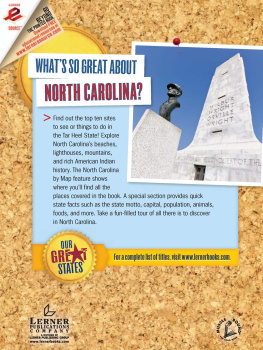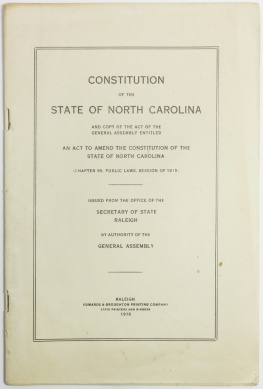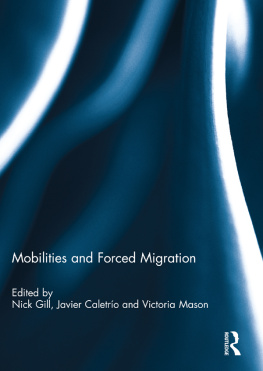Hannah Gill - The Latino Migration Experience in North Carolina
Here you can read online Hannah Gill - The Latino Migration Experience in North Carolina full text of the book (entire story) in english for free. Download pdf and epub, get meaning, cover and reviews about this ebook. year: 2010, publisher: Univ of North Carolina Press, genre: Politics. Description of the work, (preface) as well as reviews are available. Best literature library LitArk.com created for fans of good reading and offers a wide selection of genres:
Romance novel
Science fiction
Adventure
Detective
Science
History
Home and family
Prose
Art
Politics
Computer
Non-fiction
Religion
Business
Children
Humor
Choose a favorite category and find really read worthwhile books. Enjoy immersion in the world of imagination, feel the emotions of the characters or learn something new for yourself, make an fascinating discovery.

- Book:The Latino Migration Experience in North Carolina
- Author:
- Publisher:Univ of North Carolina Press
- Genre:
- Year:2010
- Rating:5 / 5
- Favourites:Add to favourites
- Your mark:
- 100
- 1
- 2
- 3
- 4
- 5
The Latino Migration Experience in North Carolina: summary, description and annotation
We offer to read an annotation, description, summary or preface (depends on what the author of the book "The Latino Migration Experience in North Carolina" wrote himself). If you haven't found the necessary information about the book — write in the comments, we will try to find it.
Hannah Gill: author's other books
Who wrote The Latino Migration Experience in North Carolina? Find out the surname, the name of the author of the book and a list of all author's works by series.
The Latino Migration Experience in North Carolina — read online for free the complete book (whole text) full work
Below is the text of the book, divided by pages. System saving the place of the last page read, allows you to conveniently read the book "The Latino Migration Experience in North Carolina" online for free, without having to search again every time where you left off. Put a bookmark, and you can go to the page where you finished reading at any time.
Font size:
Interval:
Bookmark:
All rights reserved
Manufactured in the United States of America
Gill, Hannah E. (Hannah Elizabeth), 1977
The Latino migration experience in North Carolina : new roots in the
Old North State / Hannah Gill.
Includes bibliographical references and index.
ISBN978-0-8078-3428-2 (cloth: alk. paper)
ISBN978-0-8078-7163-8 (pbk.: alk. paper)
1. Hispanic AmericansNorth Carolina. 2. Latin AmericansNorth Carolina.
3. North CarolinaEmigration and immigrationHistory. I. Title.
F265.S75G55 2010
303.48*275608dc22 2010020418
paper 14 13 12 11 10 5 4 3 2 1
Mapping the Issues at the Heart of Change in North Carolina and the Southeast
Whats at Stake in Alamance County and Beyond
Learning from History
The Economic, Work, and Social Realities of Migration from Both Sides of the Border
How Migrants Make New Lives
Latino Youth, the Agents of Change
- North Carolina counties xvi
- Heritage banner flies over the city of Graham
- New Hope in Christ Evangelical Church in Alamance County
- Abolitionist poster from an 1851 Boston newspaper
- Poster found in Alamance County in August 2008 warning Hispanics to avoid police
- Newspaper advertisements recruiting Latinos to work in North Carolina
- Girls play basketball at a school in rural Guanajuato
- A resident of Tamaula, Guanajuato, herds goats to the towns dairy
- A one-stop shop in Graham for sending remittances, getting tax assistance, and buying phone cards
- Poster for festival celebrating Latino heritage in Asheboro
- Puppet created by the Paperhand Puppet Intervention in Saxapahaw, inspired by Mexican Day of the Dead traditions
- Advertisement for the Dominican merengue band Oro Solido
Font size:
Interval:
Bookmark:
Similar books «The Latino Migration Experience in North Carolina»
Look at similar books to The Latino Migration Experience in North Carolina. We have selected literature similar in name and meaning in the hope of providing readers with more options to find new, interesting, not yet read works.
Discussion, reviews of the book The Latino Migration Experience in North Carolina and just readers' own opinions. Leave your comments, write what you think about the work, its meaning or the main characters. Specify what exactly you liked and what you didn't like, and why you think so.






